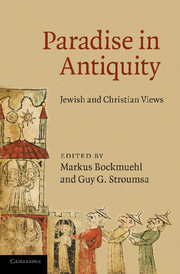Book contents
- Frontmatter
- Contents
- Notes on contributors
- 1 Introduction: the paradise chronotrope
- PART I PARADISES OF SECOND TEMPLE JUDAISM AND CHRISTIAN ORIGINS
- PART II CONTEMPORIZING PARADISE IN LATE ANTIQUITY
- 15 Epilogue: a heaven on earth
- Select bibliography
- Index of subjects
- Index of authors (cited in text)
- Index of sources
- References
Select bibliography
Published online by Cambridge University Press: 06 December 2010
- Frontmatter
- Contents
- Notes on contributors
- 1 Introduction: the paradise chronotrope
- PART I PARADISES OF SECOND TEMPLE JUDAISM AND CHRISTIAN ORIGINS
- PART II CONTEMPORIZING PARADISE IN LATE ANTIQUITY
- 15 Epilogue: a heaven on earth
- Select bibliography
- Index of subjects
- Index of authors (cited in text)
- Index of sources
- References
- Type
- Chapter
- Information
- Paradise in AntiquityJewish and Christian Views, pp. 221 - 247Publisher: Cambridge University PressPrint publication year: 2010

